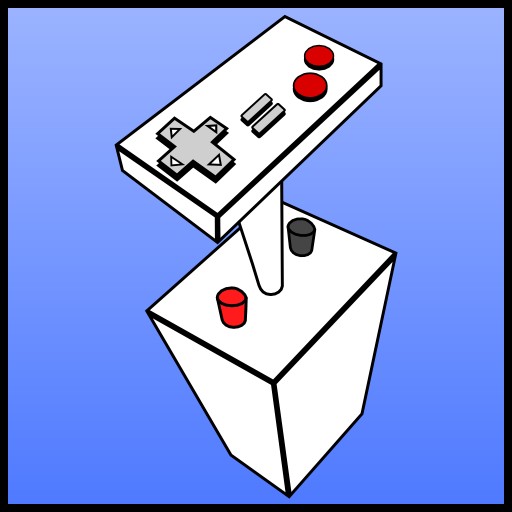
Previously: Oxygen, Chlorine, and Problems
Today’s plan is supposedly simple: get 3 more dupes, unlock advanced research, and get ranches started. The hot former oil biome above the kitchen seems like a good place to put the ranches, so we start by setting up a place to move the oil.
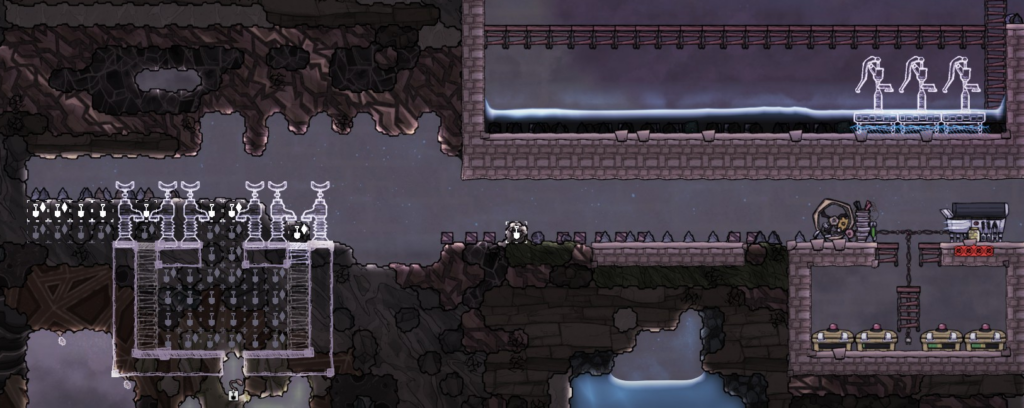
Since we’re planning on taking a few dupes in the near term, I set up another schedule in advance.

The ranch area is just above where the kitchen is, and since dupes will be working near there a lot, the low oxygen in that area is a problem. So we split off from our main oxygen line and stick a vent up in the corner of the mess hall.

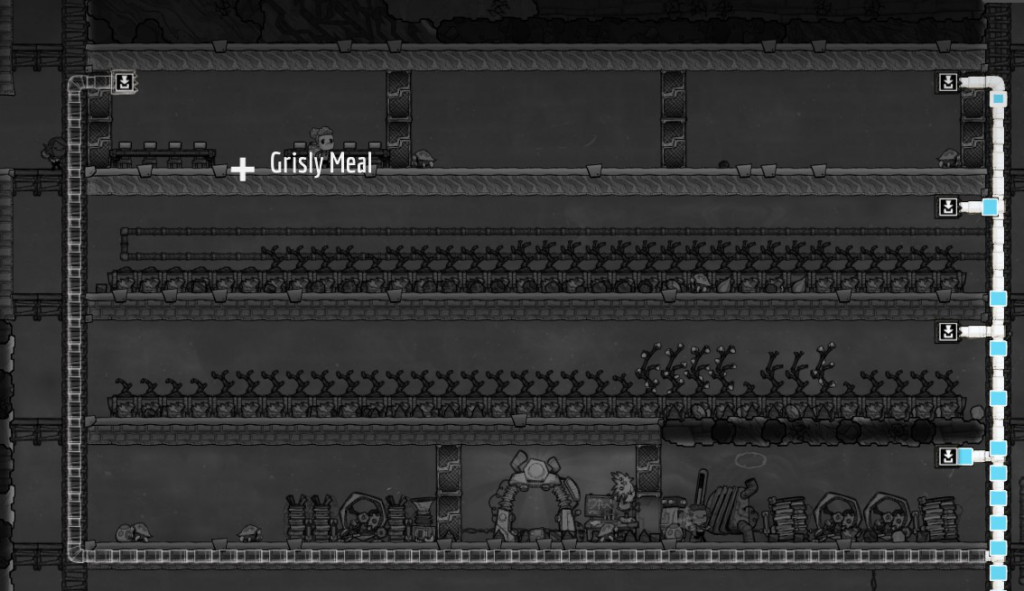
The printing pod doesn’t bring anyone we need, so brightening up someone’s decor isn’t a bad option. We primarily want farmers and ranchers, builders and diggers as well, and having a few more bodies around to move materials wouldn’t hurt either. The rust deoxidizer setup will support around 11 dupes, and we have some algae left as well; food-wise we’re storing a lot of pickled meal and of course hoping to have barbeque coming online soon.
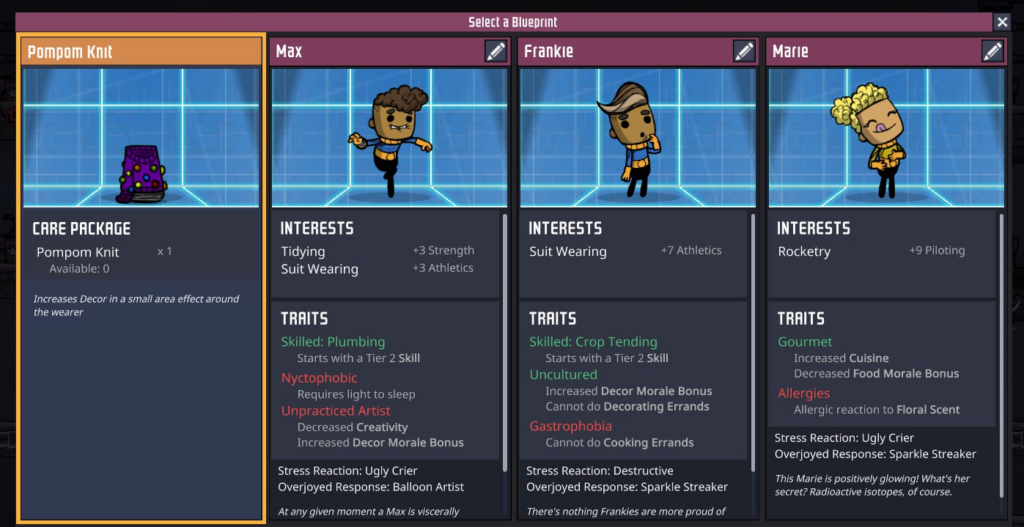
While the oil is being moved, we also start digging out the floors of our ranch setup. There’s some wild sleet wheat in the icy biome adjacent, so we queue up automatic frost burgers on the grill. The whole ranching area is still pretty hot from the oil, so breaking the abyssalite walls into the icy biome will help with that too.
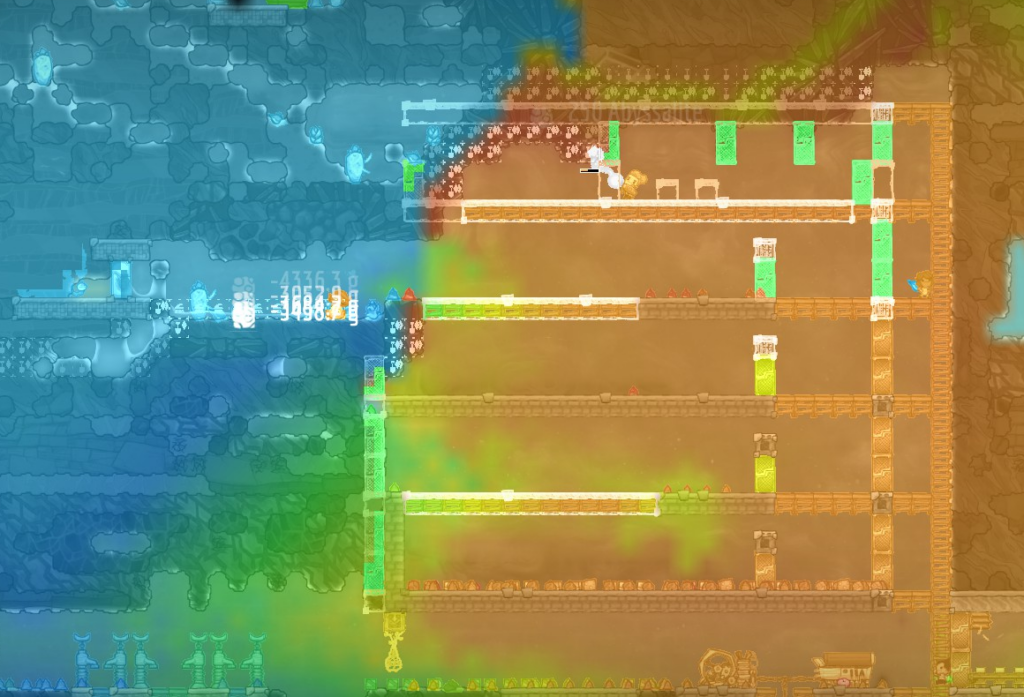
The pod comes through for us twice so we will get advanced research soon.



One of our new dupes is an early bird so we configure schedules accordingly.

That’s 10 techs and 10 dupes so far. While our rust deoxidizer setup can theoretically supply 11 dupes’ worth of oxygen, the current pipe setup only lets us move a bit less than 1kg/s of oxygen out of the room. We’ll need a third gas pump, with each pump running into its own filter. Combining the oxygen output of the filters onto one pipe still has the same problem, so we repurpose the overflow on the chlorine filter to spit out any extra oxygen into the hallway (not pictured here, but I later added that line where the green arrow is).
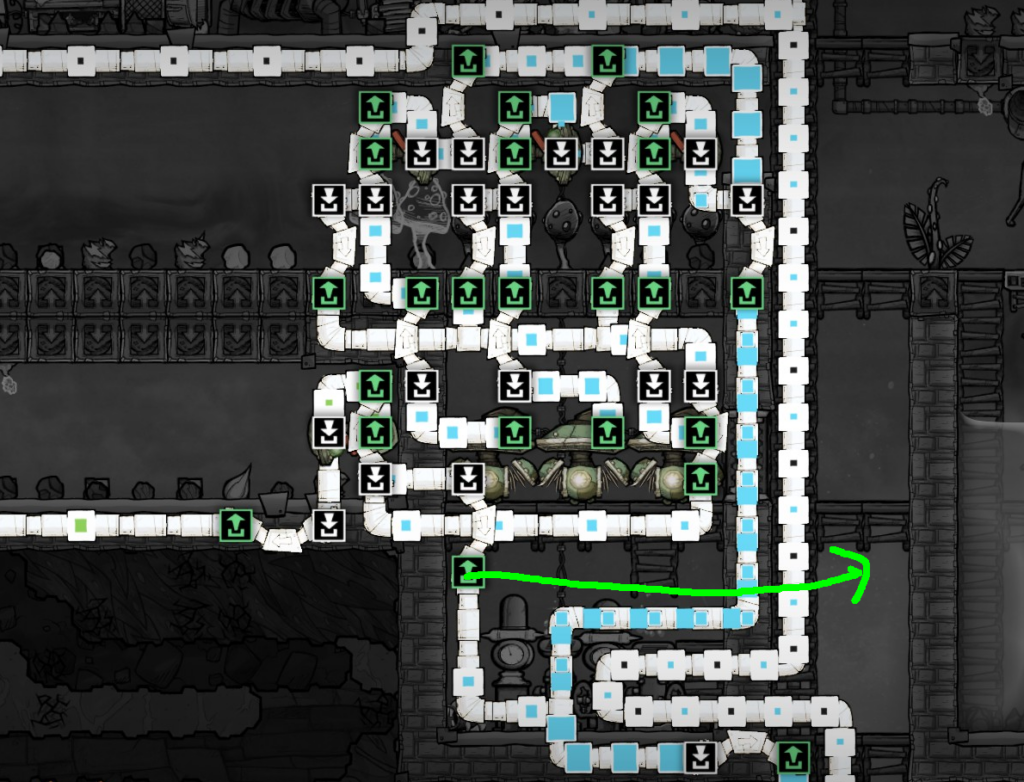
The bridges make this look a lot worse than it is. First the gas pumps just get their output directly into the filters.

Anything that is not oxygen, or oxygen overflow if the filter output is full, goes to the chlorine filter.

The filtered oxygen, meanwhile, runs down to the ethanol pool to get cooled.

Filtered chlorine goes into the chlorine room, and any overflow (which is guaranteed to not be chlorine unless the chlorine room clogs up) ends up in the hallway. Since there are two gas pipes carrying oxygen out of the room, we will be able to extract 100% of the rust deoxidizers’ output and therefore supply 11 dupes with oxygen. This could even be expanded a little further with a third rust deoxidizer, although with only 3 pumps we’d only be pulling somewhere around 1.3 to 1.4 kg/s of oxygen out of the room.
Our single coal generator is also not quite enough to power this system anymore, so dupes will occasionally run on the wheels to keep the batteries topped up.

With advanced research…researched…we reconfigure our pod area to fit in the super computer. This also has the benefit of turning the room into a laboratory for a research speed boost we do not need at all.

With not much to do until we get ranching researched, and the pod not providing any dupes worth taking, the ranch floors get finished and our dupes have time to sweep up a bit.
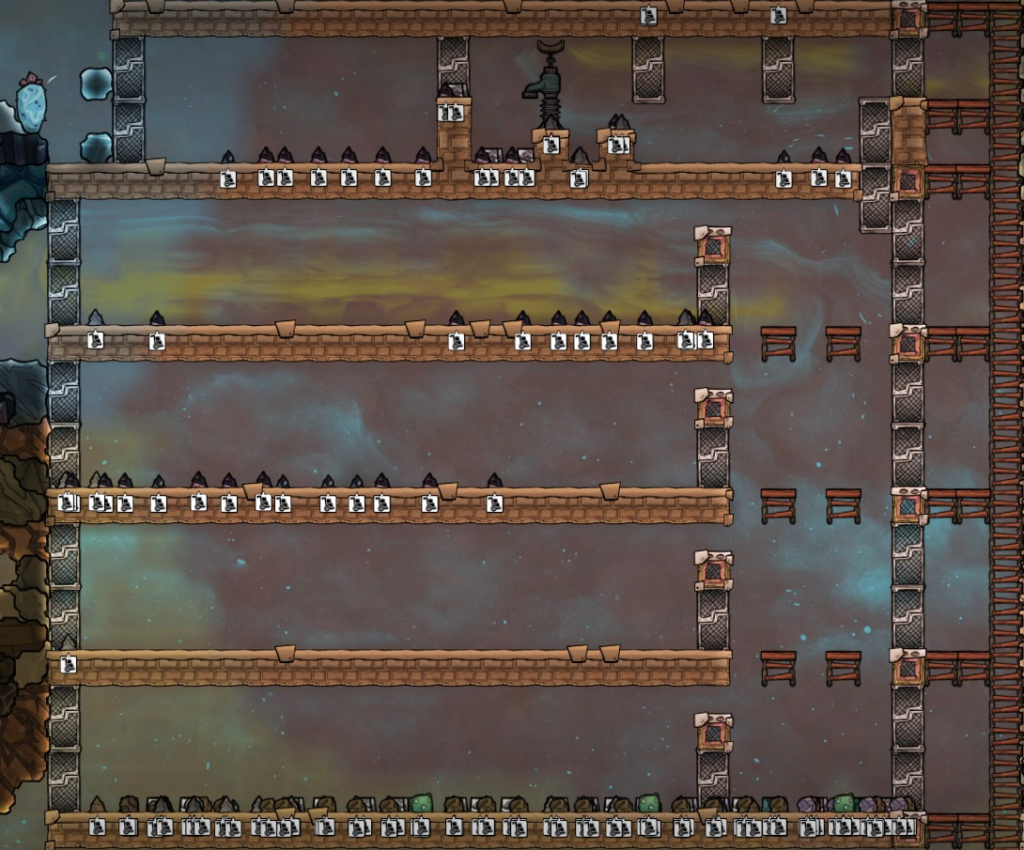
Our diggers are also exploring further afield, and we find actual dreckos.

We’ve also sent out digging parties to get more rust and salt, and also noticed a problem with our plan to ranch hatches: we don’t have a supply of sedimentary rock. I’m not sure where this 400kg came from, but there isn’t any more on the map anywhere I can find. So we’ll be feeding hatches sandstone for a while and hoping the 2% chance of stone hatch eggs adds up enough to give us a couple before we run out.
Here’s where the base stands after 75 cycles, while we wait for another dupe to get ranching researched.

Next: Intermission: Designing a Minibase
Next in Series: Getting Stable


